The Kholo area is blessed with several Land for Wildlife properties and vast protected areas managed by Brisbane City Council, SEQ Water and Queensland Parks and Wildlife Service. The environment is hard border country (mainly Spotted Gum, Grey Ironbark open woodland), previously used for logging timber and clear-felled in parts for farming livestock. Large swathes of forest are healthy regrowth aged 60-80 years, meaning there is plenty of vegetation, but natural tree hollows are scarce.
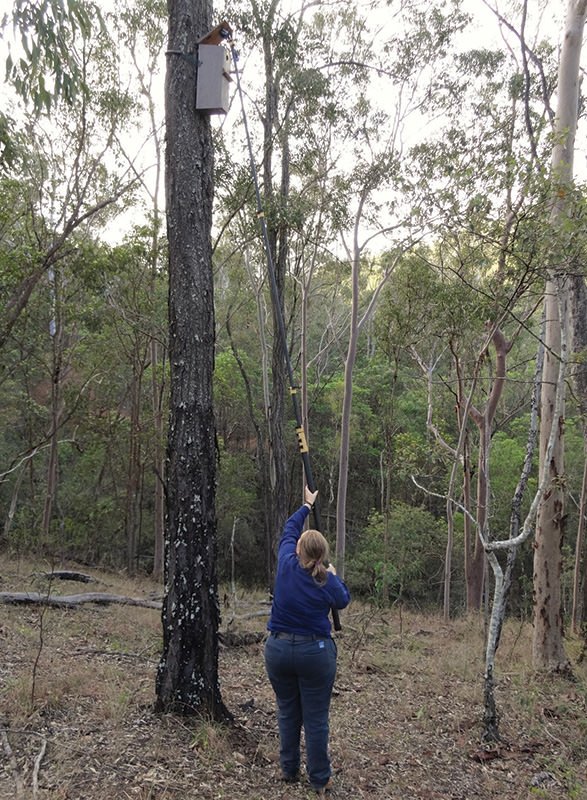
Our property lies within a state-significant ecological corridor with excellent habitat features including structural and floral diversity, rocky outcrops and ephemeral creeks.
Several significant and hollow-dependant species are found in Kholo including Glossy Black-Cockatoos, various glider species, Powerful Owls and the Brush-tailed Phascogale. Phascogales prefer to inhabit dry sclerophyll forest and woodlands with sparse ground cover, an exact match to Kholo’s forests.
Two years ago, a young female phascogale we nicknamed ‘Germaine’ enthralled us as we watched her produce four young (see graph on facing page showing phascogale movements over their three month use of the nest box). She inspired a nest box project in the neighbourhood aiming to assist her babies to have young of their own.
In September 2018, 16 nest boxes, generously provided by Brisbane City Council’s Land for Wildlife program, were installed across 8 properties adding to 8 boxes already installed by keen landholders.
We installed nest boxes with both front-facing and rear-facing entrances. Rear-facing nest boxes have spacers that sit between the nestbox and the tree, creating a gap for wildlife to move to and from the nestbox while remaining close to the tree trunk.
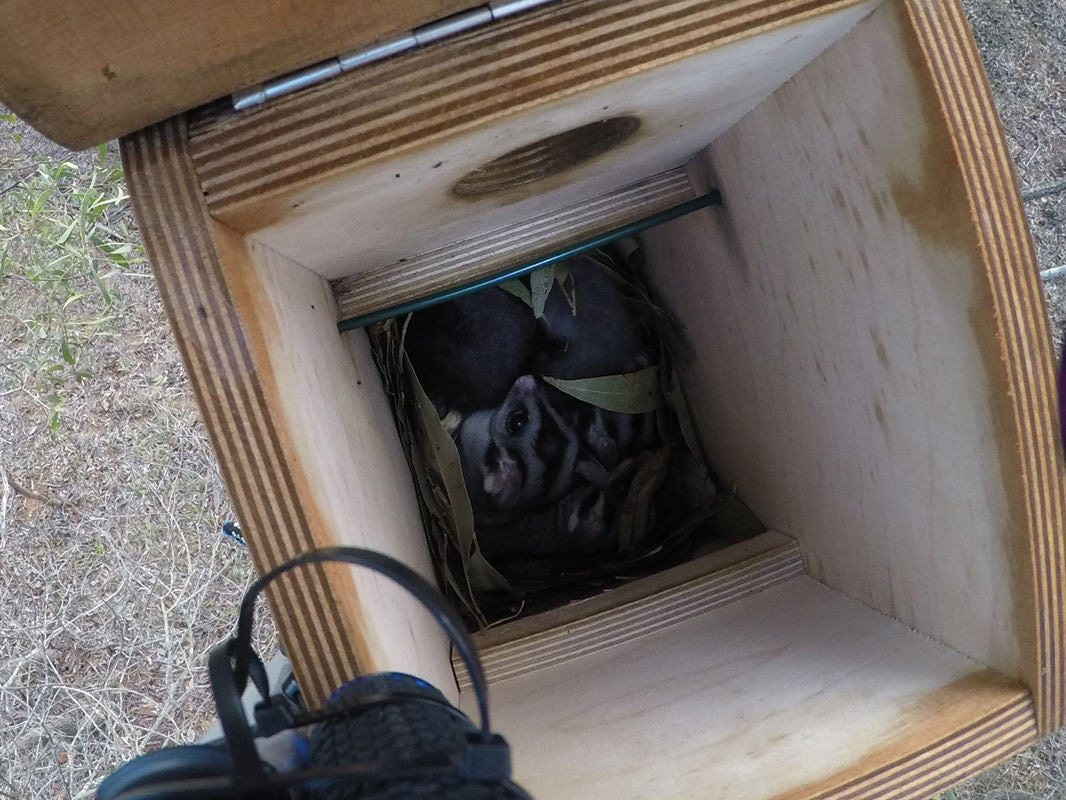
In June 2019 (preceding the breeding season) our keen team began planning a neighbourhood nest box audit. Finally, the day came and what an exquisite one. The sun was out, and the wind was still, as first my neighbour Renee, then three Land for Wildlife Officers trundled up the dirt drive to our yard.
In one afternoon, we inspected 24 nest boxes on 8 properties and found:
17 boxes were in active use (contained nesting material).
4 boxes had phascogale nesting material (description below).
3 boxes had phascogale scats on top (taken for analysis).
13 boxes had Squirrel Glider nesting material present.
5 boxes had Squirrel Glider colonies present.
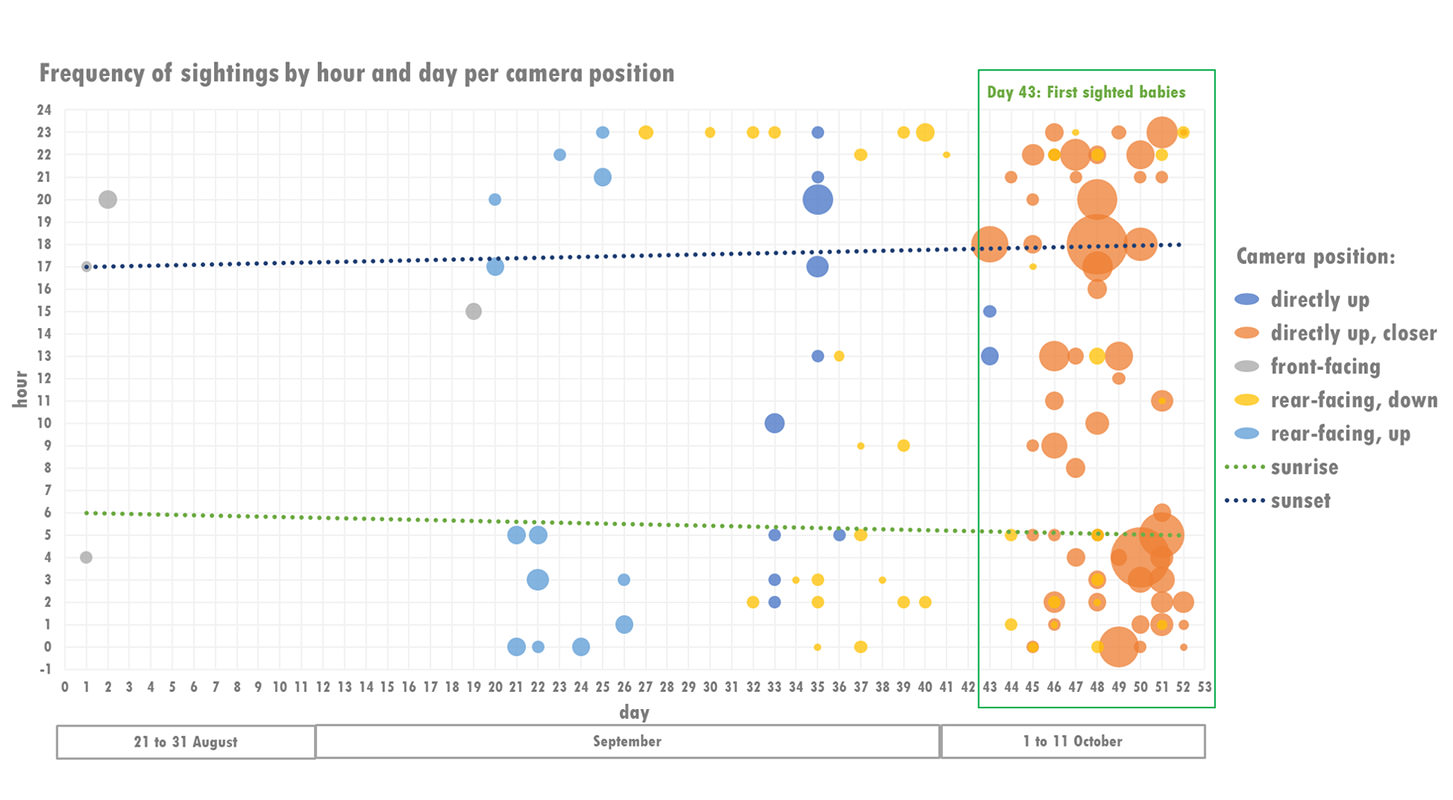
It appears that if you provide nest boxes for phascogales, gliders will move in too! Gliders are voracious nesters. They’re neat freaks, using only the leaves in trees nearby and laying them carefully to form a neat cup with a delightful eucalyptus scent, often claiming more than one box.
Phascogales however have no qualms in taking any unoccupied box and stuffing it full of smelly stuff. Feathers, bark, mattress stuffing, plastic twine, dog hair; as long as it can house a sleeping body. Phascogales have even resorted to taking up residence in microbat nest boxes and people’s linen closets! Clearly, they’re not fussy about where they bed down.
There is one difference in nest box preference for phascogales and gliders – size. The entrance holes are similar however gliders like a tight nest in a box with a small floor space and phascogales spread out, sometimes having different ‘bedrooms’ in the same box.
Some more pointers if you are thinking of installing a phascogale nest box or three:
Boxes should face east to south-east.
Avoid exposure to artificial light or installing nest boxes near highly trafficked areas.
Phascogales prefer rough-barked trees so install your box on an ironbark, tallowwood or similar.
Trees with healthy canopy cover offer a level of protection for phascogales leaving their nest.
The scat analysis provided a snapshot of the local phascogale diet, which included skink, cocoon, beetle, grasshopper, ant, centipede and rat. Scats also contained phascogale grooming hairs. We look forward to seeing if and how the contents of their scats (i.e. their diet) change over time.
Resources and motivation haven’t yet been found to do peer review work on the abundance and ecology of SEQ phascogales. It is my hope that our citizen science will plant a red flag as a starting point for more formal research.
Rob Nitschke
Land for Wildlife member
Kholo, Brisbane
Additional text provided by Amanda Maggs (Brisbane City Council) and Renee Chamberlin (Land for Wildlife member, Kholo)

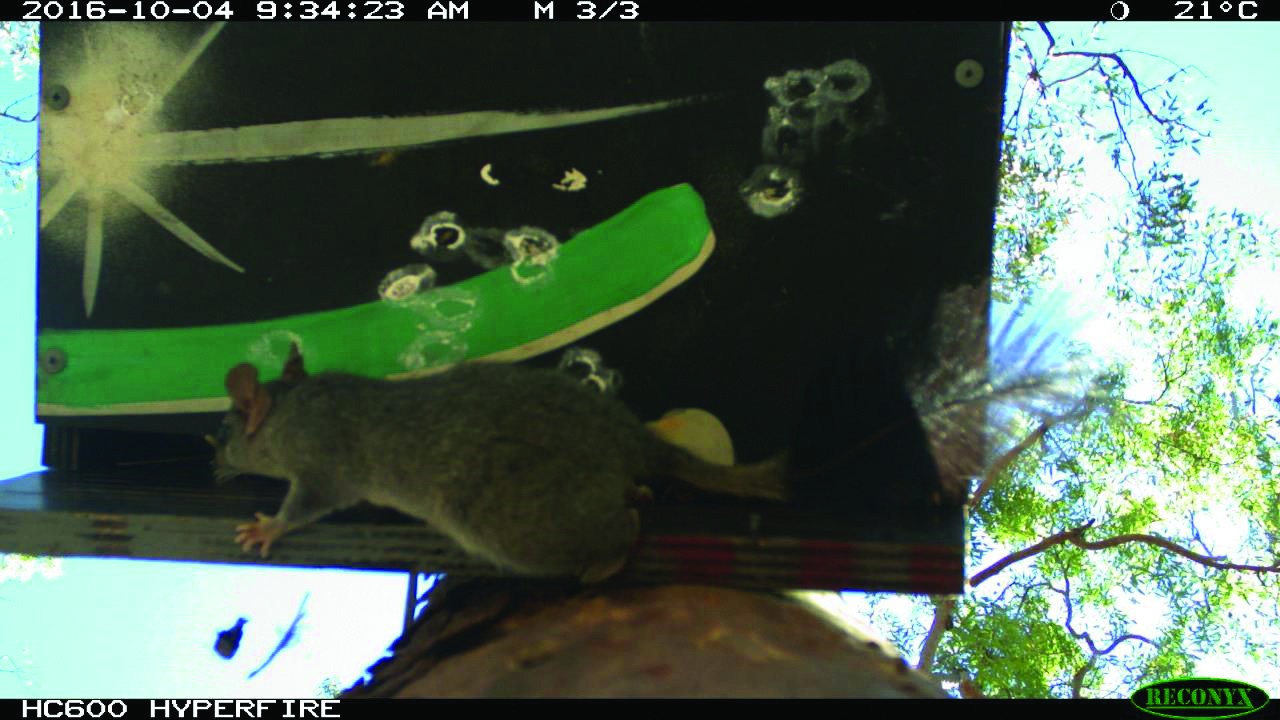
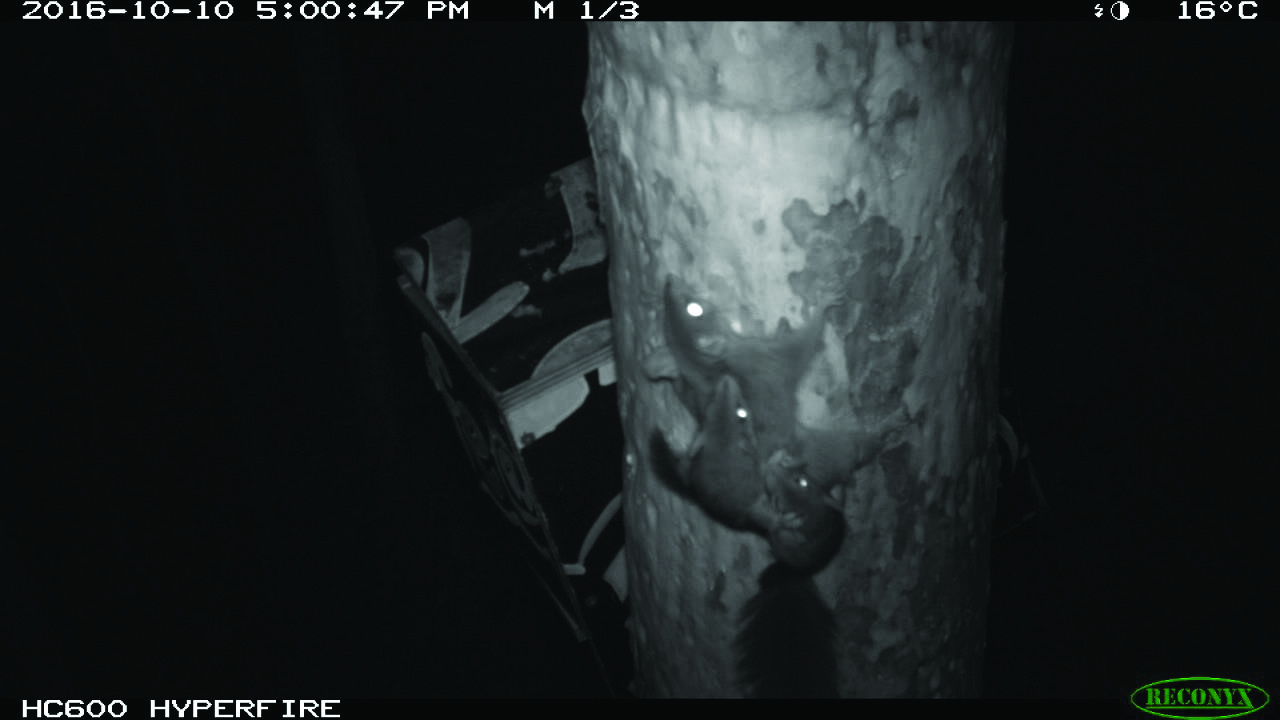
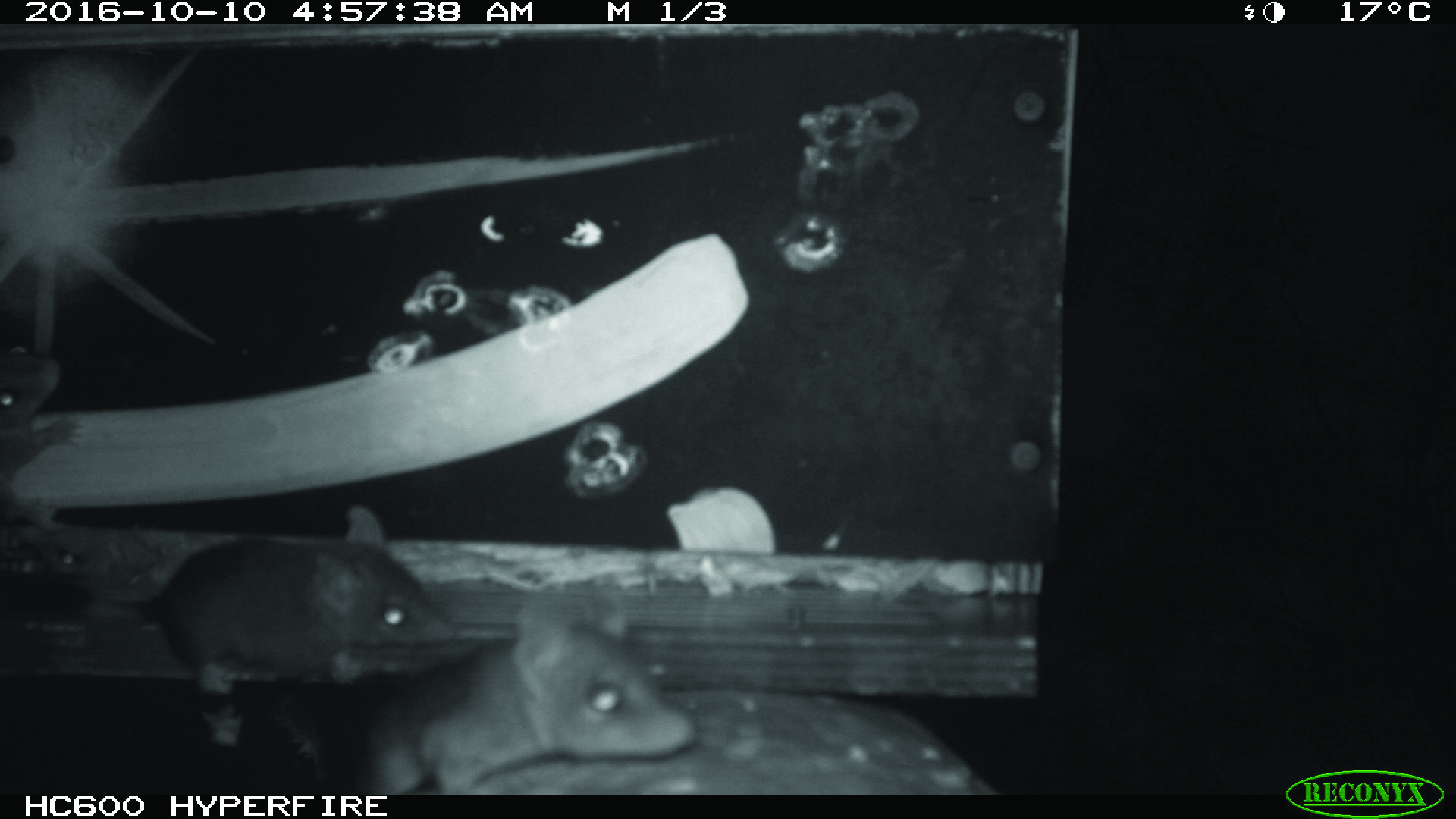
Hi I’m looking at a grant to purchase a camera to survey our Landcare group a nest boxes. Eg we have some rear entry glider boxes with squirrel glider inhabitants. I wanted to know what go pro you are using? & how are you mounting it pole as I’m applying for a council grant open October . Thanks Luise President Springfield Lakes Nature Care
Dear Catherine, we are interested in your uses of a GoPro camera attached to a long pole to look into Bird nests.
I am part of a group that does Tree Hollow nest surveys for the Carnaby Cockatoos each year.
We need to look into tree hollows up to 13meters tall and can be up to a metre deep. The average height would be 8-9 meters hollow heights.
What Go Pro do you use ? and what is the pole ?. Does the Go Pro blue tooth to a mobile phone the image?
We are very new to Go Pro so keen to learn how they may be able to assist us with our surveys.
Do you think it would be suitable for our needs.
Keen for your assistance in this matter.
Cocanaup Conservation Alliance https://cca.asn.au/
Thanks Jennifer. We have replied to you via email. Goodluck with your work.